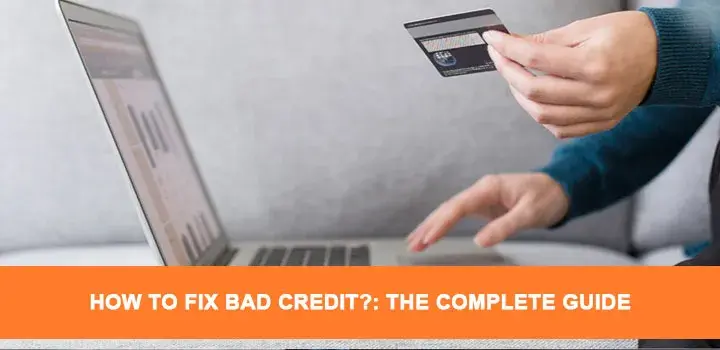
Moving through life and discovering the many credit products on the market will help you see how beneficial credit can be for your financial situation. Among the finest stepping stones you may produce for yourself is a solid credit score. It may enable you to get reasonable rates on mortgages, vehicle loans, or any other kind of loan and guarantee a good financial future. You should so keep current with all of your credit-related activities and pay your bills as necessary. Once you can keep that solid credit record, the opportunities are almost unlimited.
Sometimes, however, life knocks us down and circumstances beyond our influence develop. Physical, psychological, and financial crises may bring months or even years of anxiety. Some individuals struggle to restrict their expenditure during this period. Bad credit stems from a protracted time of financial issues. Though painful, consumer proposals and bankruptcies occur daily throughout the nation. Repairing and maintaining credit once it has been seriously damaged may be among the most taxing and time-consuming financial tasks for all these reasons. How then should one handle it? When it comes time to address your negative credit, how can you begin to mend it? Should you have terrible credit, the Credit Repair Ease staff offers some advice at your disposal.
What are the causes of bad credit?
In the financial sector, a poor credit rating may be ascribed to many distinct elements. The buildup of consumer debt resulting from unpaid credit card bills and other kinds of consumable, non-long-term loans is one of the key culprits. Regularly occurring default on loans is another major credit loss issue many Canadians deal with. Whatever the reason behind your financial issues, most data travels directly to your credit report and remains there for years. Your credit score will drop along with every negative transaction you do.
Irresponsible use of credit cards
Of course, one of the primary reasons Canadians find themselves in debt is credit card usage. Usually, the first credit product individuals seek and begin to use regularly is a credit card. An excellent approach to keeping and improving a solid credit history is careful with credit card use—that is, paying payments on time the whole. Not necessarily a positive thing, however, is that using a credit card is simple and handy. Most machines feature the option of "tap," hence in most outlets, you seldom even need to input your PIN (Personal Identification Number). These are also rather enticing as ostensibly you simply have to pay a minimal monthly charge on your credit card bills to avoid a penalty.
Default on loans
Just as bad as not paying your credit card debt is being in loan default. Worse in some respects as "secured" loans include collateral and might be taken back to reimburse the lender for borrower failure. For many Americans, missed vehicle and mortgage payments represent a death sentence.
Consumer proposals
You will have to deal with a Licensed Insolvency Trustee if you want to submit a consumer proposal. They will negotiate on your behalf with your creditors, telling them you cannot pay them one installment. You will pay back your debts via your trustee in monthly installments if the plan is approved. A consumer proposal will damage your credit for at least three years even if it is above bankruptcy. If your debt is serious enough to take four years to pay off, it will show on your credit record for seven years.
Bankruptcy
Filing for bankruptcy is probably the worst thing you could do for your credit score. Though many customers with significant financial issues may only have this option, remember that it will significantly affect your credit score for a very long period. Depending on the bankruptcy agency you are working with and the province or territory you reside in, a first personal bankruptcy will indeed remain on your credit record for 6 to 7 years. In Quebec, New Brunswick, Newfoundland and Labrador, Prince Edward Island, and Ontario it takes seven years. Imagine if this is your second bankruptcy. 14 years have ruined your credit. This alone makes bankruptcy always a last choice in the most dire financial circumstances. Therefore, as with the consumer proposal, it is very crucial to have a free consultation with a Licensed Insolvency Trustee to ascertain that bankruptcy is the only viable choice before calling to close. Remember that you will have to start paying the trustee's services and any accompanying legal expenses after the first free session with them.
How to improve your bad credit?
This does not imply you will have poor credit throughout your life. If this one is below usual, calm yourself. One may improve it. The key is to be proactive and patient. Should your credit be severely damaged—that is, less than 500—fixing it will require time and work. Finding strategies to raise your credit is always beneficial even if right now it is better than average. These actions will help you to bring about it.
Just Call Us To Start Now! (888) 803-7889